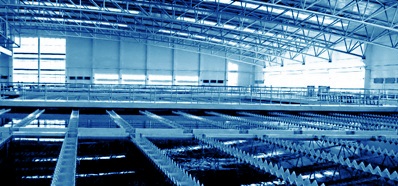Manual fittings
Main Types of Pipeline Fittings and Their Applications
Pipeline fittings are a set of components used to control and manage the flow of liquids or gases in pipeline systems. They play a crucial role in ensuring the safety, efficiency, and reliability of pipelines across various industries, ranging from oil and gas to food and pharmaceuticals. The diversity of pipeline fittings allows for selecting optimal solutions for specific tasks and operating conditions.
Primary Types of Pipeline Fittings and Their Characteristics:
- Valves: Used for complete shut-off of flow in the pipeline. They come in various types such as gate valves, globe valves, and ball valves. Materials used for manufacturing include cast iron, steel, stainless steel, and brass.
- Valves: Used for regulating and controlling flow in the pipeline. Types include ball valves, gate valves, butterfly valves, and control valves. Materials used for manufacturing include steel, stainless steel, brass, and plastic.
- Flanges: Used for connecting pipes and fittings, as well as ensuring the tightness of connections. Varieties include flat, socket-welded, and welded flanges. Materials used for manufacturing include steel, stainless steel, brass, and aluminum.
- Elbows and Tees: Alter the direction of flow in the pipeline. Types include 90° elbows, 45° elbows, eccentric tees, and concentric tees. Made from steel, stainless steel, and plastic.
- Plugs and Caps: For temporary or permanent closure of the end of the pipeline. Includes blind caps and manually operated caps. Materials used include steel, cast iron, stainless steel, and plastic.
- Mixers and Splitters: For mixing or separating flows of different liquids or gases. Types include static and dynamic mixers, multi-level splitters. Materials used for manufacturing include stainless steel and plastic.
- Filters: For purifying the flow from solid particles or other impurities. Types include mesh and cartridge filters, separators. Also manufactured from stainless steel or plastic.
Each type of pipeline fitting has its own characteristics, determined by the requirements of specific technological schemes and operating conditions. Proper selection and installation of fittings are important steps to ensure the reliable and safe operation of pipeline systems in various industries.
Shutoff Fittings
Shutoff fittings are technical devices used for regulating, closing, or controlling the flow of a working medium in various systems and equipment. They act as switches that can block or allow the passage of liquids, gases, or steam through pipelines.
The main functions of shutoff fittings are opening and closing the flow, regulating its intensity, and maintaining the desired pressure in the system. This allows for controlling processes and ensuring the safe operation of various engineering systems.
Depending on their design, shutoff fittings can be represented by various types of valves and valves. Valves are divided into ball, disc, gate, needle valves, and others. Valves, in turn, can be straight-through, rotary, wedge, or plate. It is also divided by the type of drive:
Effective use of shutoff fittings allows regulating flows in the system according to requirements and tasks. It is applied in various industrial sectors such as oil and gas, chemical, energy, water treatment, and others. Shutoff fittings ensure the reliability and safety of technological processes, prevent substance leakage, and control the flow.
The company has capabilities for supplying any shutoff fittings.



